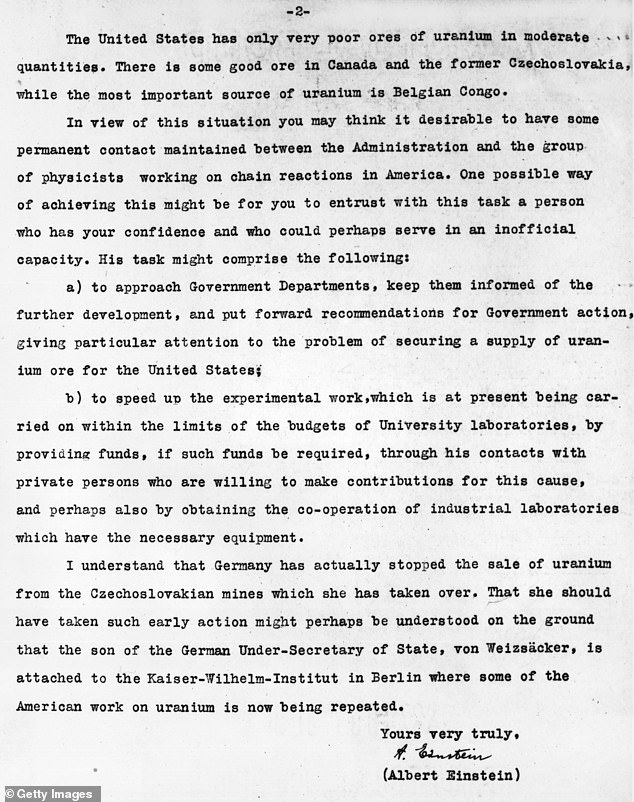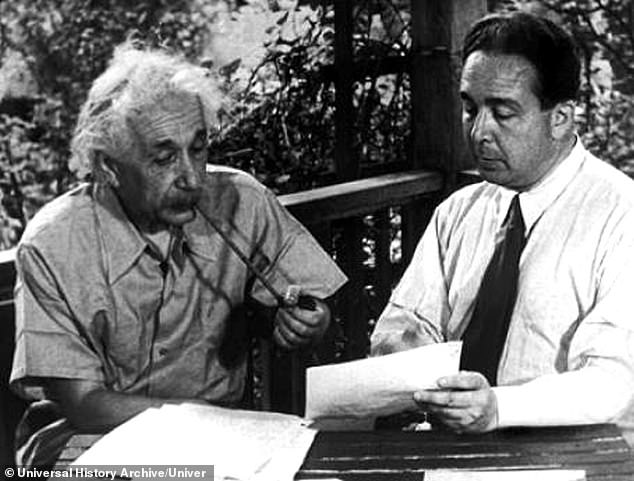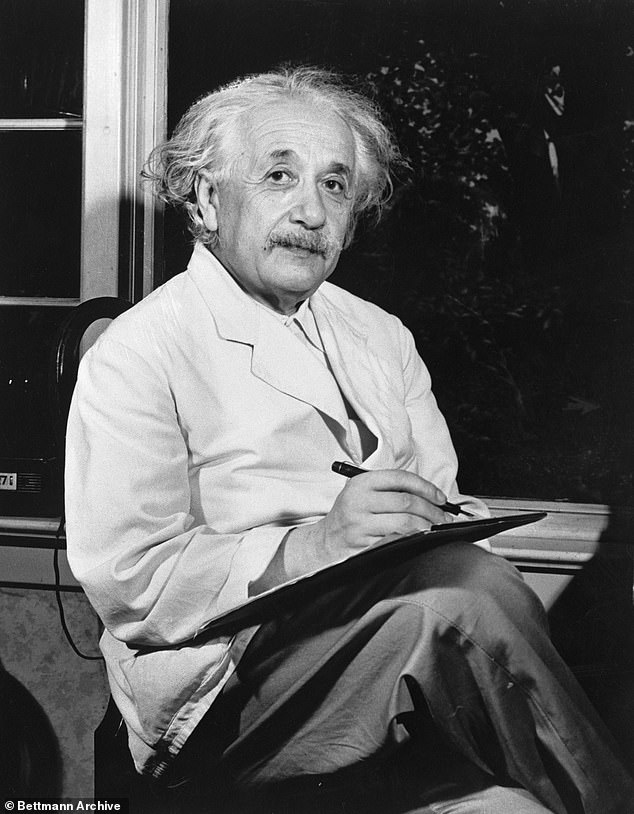Albert Einstein’s atomic bomb letter to Franklin D. Roosevelt could fetch $4 MILLION at auction
Renowned physicist Albert Einstein’s letter urging President Franklin D. Roosevelt to develop the world’s first atomic bomb could fetch $4 million at auction.
The two-page letter, written in 1939, called for “swift action” for the US to establish a nuclear program, and warned that Nazi Germany may already have the capabilities.
“It is conceivable – although much less certain – that extremely powerful bombs of a new type could be constructed in this way,” the letter said.
Although Einstein’s name was the only one included, the letter was written by inventor Leo Szilard, who believed that the letter would catch the president’s attention if signed by the theoretical physicist.
It will be sold at Christie’s in New York on September 10, along with a collection of artefacts that belonged to the late Microsoft co-founder Paul Allen, who died in 2018.
Although Einstein’s name is on the letter, it was written by Leo Szilard, who believed it would get the president’s attention. The world-famous physicist signed the letter

It will be sold at Christie’s in New York on September 10, along with a collection of artefacts that belonged to the late Microsoft co-founder Paul Allen, who died in 2018.
Einstein’s original letter is kept at the Franklin D. Roosevelt Library and Museum in New York, but the physicist also signed a second letter that he left for the safekeeping of fellow scientist Leo Szilard.
In the letter, Einstein and Szilard suggested that a chain reaction of uranium could be converted into nuclear energy that would lead to the construction of “extremely powerful bombs.”
‘A single bomb of this type… could very well destroy the entire harbour, together with part of the surrounding area.’
Einstein and Szilard advised the president to ‘maintain permanent contact between the government and the group of physicists concerned with chain reactions in America.
“One possible way to achieve this could be to entrust this task to a person you trust who could perhaps serve in an unofficial capacity.”
Einstein, who was Jewish, fled Germany to the US during the Nazi order and sent the letter to President Roosevelt less than a month before Germany invaded Poland.
Two years after the letter was written, the Manhattan Project was founded under the leadership of J. Robert Oppenheimer. The project aimed to build the atomic bombs dropped on Hiroshima and Nagasaki in Japan in 1945.
Szilard kept the letter for the rest of his life, but his heirs sold it in 1986 for $200,000 to Malcolm Forbes, a third-party presidential candidate in 1996.
“The letter represents an incredible historical milestone; To me, this is the reason we have had peace for 40 years,” Forbes said The New York Times after he bought the letter.
Forbes later sold the letter to Allen in 2002 for $2.1 million.

Szilard (right) asked Einstein (left) to sign the letter because he believed President Roosevelt would be more likely to take the letter seriously if it came from the famous physicist

President Franklin D. Roosevelt assigned J. Robert Oppenheimer to lead a team of scientists that would create the world’s first atomic bomb, the Manhattan Project.
Marc Porter, chairman of Christie’s Americas, told the Wall Street Journal that Allen “undoubtedly knew that it was one of the most important documents in 20th century history, and that’s not something you just hang in your office.”
He said Allen carefully kept the letter out of sunlight so the artifact was preserved.
Jessica Stanley, Christie’s PR director, told DailyMail.com that the letter is in ‘excellent condition’ and is being sold by Allen’s estate in the ‘Gen One’ auction.
This is ‘a series of three auctions of objects and art showcasing scientific achievements and technological innovation,’ all from Allen’s collection.’
In accordance with Allen’s wishes, all proceeds from the auction will be donated to charity.
On President Roosevelt’s orders, Oppenheimer set up a team of scientists in a remote area of New Mexico to research uranium and build the atomic bomb, but by the time it was tested in 1945, the Germans had already been defeated and World War II had begun started.
Once the bomb was created, President Harry Truman ordered that the weapon be used to abruptly end the war.

Albert Einstein (pictured) called for “swift action” for the US to establish a nuclear program in a letter to President Roosevelt, warning that Nazi Germany might have the capabilities to make the bomb
The US dropped the world’s first atomic bomb on Hiroshima, setting off an explosion of 15,000 tons of TNT that left the city in ruins for four square kilometers and killed 80,000 people.
In the following weeks, about 50,000 people died from shrapnel and radiation poisoning, bringing the total death toll to 140,000.
Three days later, a second atomic bomb was dropped on Nagasaki, killing 40,000 people, and within a few days Japan announced its surrender.
The devastation was so great that no country has used an atomic bomb since.
At the time, Einstein thought it was his duty to warn President Roosevelt about the possibility of Germany making an atomic bomb after he sought refuge in the US and later renounced his German citizenship to become an American.
His discovery of the general theory of relativity, also known as the theory of gravity, and his receiving the Nobel Peace Prize for his achievements in theoretical physics helped Einstein’s transition to the US, where he took a professorship at Princeton.
Einstein later regretted writing the letter to Roosevelt because of the role it played in making America the only country at the time to produce nuclear weapons.
In a 1947 article entitled “The Man Who Started It All,” Einstein said, “If I had known that the Germans would fail to produce an atomic bomb, I would never have lifted a finger.”
